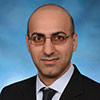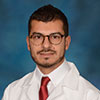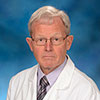 This is the third distribution of this publication since our transition to telework and a limited on-campus presence. It is strange to experience some of our lives’ biggest moments in a virtual world. In March, our Class of 2020 celebrated Match Day from their own homes. Earlier this month, we celebrated their graduation in the same manner. If you missed it, I encourage you to go back and watch the special video celebration, which may help to lift your spirits as you witness the School of Medicine community joining together in this new way: https://youtu.be/TKgR1I4Yx4M. I am truly proud and in awe of the exceptional qualities of this class. While I know we all share the disappointment of not being able to celebrate occasions like these in the way we have always imagined, I also know that nothing can take away from the joy, achievement, and sense of pride that come with these milestones.
This is the third distribution of this publication since our transition to telework and a limited on-campus presence. It is strange to experience some of our lives’ biggest moments in a virtual world. In March, our Class of 2020 celebrated Match Day from their own homes. Earlier this month, we celebrated their graduation in the same manner. If you missed it, I encourage you to go back and watch the special video celebration, which may help to lift your spirits as you witness the School of Medicine community joining together in this new way: https://youtu.be/TKgR1I4Yx4M. I am truly proud and in awe of the exceptional qualities of this class. While I know we all share the disappointment of not being able to celebrate occasions like these in the way we have always imagined, I also know that nothing can take away from the joy, achievement, and sense of pride that come with these milestones.
As we move into a new season of the year, we remain uncertain of what the rest of the year will look like. We are all experiencing a level of fear, discomfort, and confusion surrounding the future. I have been contemplating something that famed Indian philosopher Jiddu Krishnamurti once proclaimed: “One is never afraid of the unknown; one is afraid of the known coming to an end.” While the unknown is unclear, we do hold the power to make clear choices. This notion prompts us to consider how our response to the events unfolding around us truly affects our trajectory and imminent sense of well-being. We have already transitioned many aspects of our “known” into a “new normal,” and we can see that it is not all bad. For example, our telehealth initiatives have increased significantly in both quantity and quality. In the span of less than two months, almost 1,000 neurology patients have received telehealth care.
With a family medicine departmental telemedicine task force, patients are receiving increasingly optimized care through telemedicine and telephone interactions, yielding as much as a 92.6 percent increase in encounters in only two weeks. Orthopaedic patients are indicating that they greatly appreciate the ease of scheduling, the time saved from having to travel to an appointment, and the opportunity to receive care via a safe and controlled virtual interaction.
Our research efforts are also increasingly productive, largely including crucial COVID-19-related work upon which our nation and the world are relying. With a 9 percent increase in grant submissions to the National Institutes of Health from this time last year, we have received 5 percent more funding from the NIH. The renowned English poet, John Milton, is credited for giving us the expression of the “silver lining,” with his description of the light of the moon shining from behind a cloud. We at the University of Maryland School of Medicine are not only finding the silver linings; we are creating them.
While we continue to live, work, discover new ways to be productive and serve the citizens of Maryland and beyond, we do not lose heart and we do not lose our sense of purpose. At the end of the day, I believe we are all doing the best we can in every aspect of this pandemic. Our limitations during this time give us the opportunity to innovate, be creative, and reveal novel solutions we didn’t even know we needed. I encourage each member of our academic medical community to continue forth and let grace prevail. Stay healthy, stay well, and stay motivated.
In the relentless pursuit of excellence, I am
Sincerely Yours,
E. Albert Reece, MD, PhD, MBA
Vice President for Medical Affairs,
University of Maryland John Z. and Akiko K. Bowers
Distinguished Professor and Dean,
University of Maryland School of Medicine
New Faculty
The Institute of Human Virology at the School of Medicine, Division of Clinical Care and Research, Division of Infectious Diseases, Department of Medicine welcomes a new faculty member, Uzoamaka Eke, MBBS. Dr. Eke joined as Assistant Professor of Medicine on April 27, 2020. Dr. Eke is an Infectious Diseases clinician educator with special interests in HIV and hepatitis C co-infection. Dr. Eke earned her medical degree from Nnamdi Azikiwe University Medical School in 2005 in Nigeria. She completed her Internal Medicine internship and residency at the University College of Brooklyn at Long Island College Hospital, New York in 2007 and Infectious Diseases fellowship at the University of Connecticut Health Center in 2012. She has authored and co-authored several peer reviewed papers. Dr. Eke most recently worked at the Detroit Medical Center within an Infectious Disease practice.
Recent Appointments
 The Executive Council of the Proton Collaborative Group announced on March 25 the appointment of Robert Miller, MD, Professor, Department of Radiation Oncology, to a two-year term, beginning April 1, to its Board of Directors.
The Executive Council of the Proton Collaborative Group announced on March 25 the appointment of Robert Miller, MD, Professor, Department of Radiation Oncology, to a two-year term, beginning April 1, to its Board of Directors.
Congratulations to the following who have received honors!
 Thomas Blanpied, PhD, Associate Professor, Department of Physiology, was honored by National Institute of Mental Health (NIMH) with a Method to Extend Research in Time (MERIT) Award for his grant, “Internal Dynamics of the Postsynaptic Density,” now in its 13th year. According to NIMH, “The objective of the MERIT Award program is to provide stable, long-term support to investigators whose research competence and productivity are distinctively superior and who are likely to continue to perform in an outstanding manner. It is hoped that the provision of long-term, table support will foster continued creativity and lessen the administrative burdens associated with preparation and submission of regular research grant applications.”
Thomas Blanpied, PhD, Associate Professor, Department of Physiology, was honored by National Institute of Mental Health (NIMH) with a Method to Extend Research in Time (MERIT) Award for his grant, “Internal Dynamics of the Postsynaptic Density,” now in its 13th year. According to NIMH, “The objective of the MERIT Award program is to provide stable, long-term support to investigators whose research competence and productivity are distinctively superior and who are likely to continue to perform in an outstanding manner. It is hoped that the provision of long-term, table support will foster continued creativity and lessen the administrative burdens associated with preparation and submission of regular research grant applications.”
 Sara Codding, PhD, Postdoctoral Fellow, in the Lab of Matthew Trudeau, PhD, Associate Professor, Department of Physiology, was honored in February with the 2020 Paul F. Cranefield Post-doctoral Fellow Award by the Society of General Physiology for her manuscript, “The hERG Potassium Channel Intrinsic Ligand Regulates N- and C-Terminal Interactions and Channel Closure,” in the Journal of General Physiology. This study uncovered a novel structural and functional role of the intrinsic ligand in the potassium channel hERG using whole cell electrophysiology and spectral FRET techniques. Dr. Codding has been featured by SGP on their website and twitter @SGPweb.
Sara Codding, PhD, Postdoctoral Fellow, in the Lab of Matthew Trudeau, PhD, Associate Professor, Department of Physiology, was honored in February with the 2020 Paul F. Cranefield Post-doctoral Fellow Award by the Society of General Physiology for her manuscript, “The hERG Potassium Channel Intrinsic Ligand Regulates N- and C-Terminal Interactions and Channel Closure,” in the Journal of General Physiology. This study uncovered a novel structural and functional role of the intrinsic ligand in the potassium channel hERG using whole cell electrophysiology and spectral FRET techniques. Dr. Codding has been featured by SGP on their website and twitter @SGPweb.
In the Media
 Jason Adler, MD, Clinical Assistant Professor, Department of Emergency Medicine, was featured in a Fox News article, “Doctors in Distress, Quarantine Send SOS for More Protective Gear, Tests: ‘It’s a Complete Mess,’” which was published on March 26, 2020. Dr. Adler was also the lead author of “More Medical Innovation, Less Regulation,” which was published in City Journal on April 9, 2020.
Jason Adler, MD, Clinical Assistant Professor, Department of Emergency Medicine, was featured in a Fox News article, “Doctors in Distress, Quarantine Send SOS for More Protective Gear, Tests: ‘It’s a Complete Mess,’” which was published on March 26, 2020. Dr. Adler was also the lead author of “More Medical Innovation, Less Regulation,” which was published in City Journal on April 9, 2020.
 Elizabeth Clayborne, MD, Adjunct Assistant Professor, Department of Emergency Medicine, was featured in a story by NBC Washington, “Pregnant ER Doctor Treating Coronavirus Patients Urges People to Make a Care Plan,” on April 6, 2020.
Elizabeth Clayborne, MD, Adjunct Assistant Professor, Department of Emergency Medicine, was featured in a story by NBC Washington, “Pregnant ER Doctor Treating Coronavirus Patients Urges People to Make a Care Plan,” on April 6, 2020.
Congratulations to our very productive faculty on their recent grants and contracts!
 Michael Mazzeffi, MD, MPH, Associate Professor, Department of Anesthesiology, has been awarded the 2020 Mid-Career Grant by the Society of Cardiovascular Anesthesiologists (SCA) and the International Anesthesia Research Society (IARS) for his research project “Von Willebrand Factor Concentrate for Treatment of Acquired Von Willebrand Syndrome During ECMO: An in vitro Dose-Finding and Efficacy Study.” The award, $100,000 over two years, supports investigators’ research projects in the field of cardio-thoracic and vascular anesthesia.
Michael Mazzeffi, MD, MPH, Associate Professor, Department of Anesthesiology, has been awarded the 2020 Mid-Career Grant by the Society of Cardiovascular Anesthesiologists (SCA) and the International Anesthesia Research Society (IARS) for his research project “Von Willebrand Factor Concentrate for Treatment of Acquired Von Willebrand Syndrome During ECMO: An in vitro Dose-Finding and Efficacy Study.” The award, $100,000 over two years, supports investigators’ research projects in the field of cardio-thoracic and vascular anesthesia.
 Andrea Meredith, PhD, Associate Professor, Department of Physiology, received a one-year, $5,000 grant from the UMB Institute for Clinical & Translational Research (ICTR) Voucher Program for “Animal Models of KCNMA1-linked Channelopathy.”
Andrea Meredith, PhD, Associate Professor, Department of Physiology, received a one-year, $5,000 grant from the UMB Institute for Clinical & Translational Research (ICTR) Voucher Program for “Animal Models of KCNMA1-linked Channelopathy.”
 Erin O’Connor, MD, Assistant Professor, Department of Diagnostic Radiology and Nuclear Medicine, was awarded a four-year, $757,280, K23 grant from the National Institute of Mental Health for “Mechanism and Predictors of Neurocognitive Impairment in HIV Infection.”
Erin O’Connor, MD, Assistant Professor, Department of Diagnostic Radiology and Nuclear Medicine, was awarded a four-year, $757,280, K23 grant from the National Institute of Mental Health for “Mechanism and Predictors of Neurocognitive Impairment in HIV Infection.”
Kudos to our colleagues who are experts in their fields and give their all to represent the School of Medicine!
The Department of Emergency Medicine presented its annual Emergency Cardiology Symposium as a livestream on April 1, 2020. More than 3,500 people from 87 countries registered to watch the conference. Lecturing were:
- Laura Bontempo, MD, MEd, Associate Professor, on “Rethinking What We Know: Updates on the Management of Atrial Fibrillation”
- Sarah Dubbs, MD, Assistant Professor, on “Collateral Damage: Cardiotoxicities of Cancer Therapy”
- Mimi Lu, MD, Adjunct Assistant Professor, on “ECG Pearls for Pediatric Syncope”
- Benjamin Lawner, DO, MS, EMT-P, Visiting Assistant Professor, on “Airway Management in Cardiac Arrest”
- Amal Mattu, MD, Professor, who also directed the symposium, on “COVID and the Heart”
- Siamak Moayedi, MD, CDEM, Assistant Professor, on “Transvenous Pacers Made Easy!”
- Semhar Tewelde, MD, Assistant Professor, on “The Crashing Tamponade!”
- Michael Winters, MD, Professor, on “Cardiac Arrest: What’s the Latest”
 In his role as an External Assessor for the American Academy of Orthopaedic Manual Physical Therapists (AAOMPT), Roy Film, PT, MPT, DPT, OCS, FAAOMPT, Assistant Professor, Department of Physical Therapy and Rehabilitation Science, recently completed a review of an American Board of Physical Therapy Residency and Fellowship Education (ABPTRFE)-accredited Orthopaedic Manual Physical Therapy (OMPT) fellowship program.
In his role as an External Assessor for the American Academy of Orthopaedic Manual Physical Therapists (AAOMPT), Roy Film, PT, MPT, DPT, OCS, FAAOMPT, Assistant Professor, Department of Physical Therapy and Rehabilitation Science, recently completed a review of an American Board of Physical Therapy Residency and Fellowship Education (ABPTRFE)-accredited Orthopaedic Manual Physical Therapy (OMPT) fellowship program.
 Michael Grasso, MD, PhD, FACP, Assistant Professor, Department of Emergency Medicine, hosted a meeting with the Clinical Decision Support Working Group on March 10, 2020.
Michael Grasso, MD, PhD, FACP, Assistant Professor, Department of Emergency Medicine, hosted a meeting with the Clinical Decision Support Working Group on March 10, 2020.
Recent patents granted!
 Toni Antalis, PhD, Professor, and her former graduate student Erik Martin, PhD, both from the Department of Physiology and the Center for Vascular and Inflammatory Diseases (CVID), were issued U.S. Patent Number 10,568,929 “Engineered Anthrax Protective Antigen Proteins for Cancer Therapy,” which is a patent on engineered anthrax protective antigen proteins for cancer therapy based on the targeting of overactive tumor associated membrane-anchored serine proteases.
Toni Antalis, PhD, Professor, and her former graduate student Erik Martin, PhD, both from the Department of Physiology and the Center for Vascular and Inflammatory Diseases (CVID), were issued U.S. Patent Number 10,568,929 “Engineered Anthrax Protective Antigen Proteins for Cancer Therapy,” which is a patent on engineered anthrax protective antigen proteins for cancer therapy based on the targeting of overactive tumor associated membrane-anchored serine proteases.
Hats off to those who have been published!
 Odessa Addison, DPT, PhD, Assistant Professor, Department of Physical Therapy and Rehabilitation Science, was a co-author of “Healthy Lifestyle and Cognition: Interaction between Diet and Physical Activity,” which was published in Current Nutrition Reports on March 10, 2020.
Odessa Addison, DPT, PhD, Assistant Professor, Department of Physical Therapy and Rehabilitation Science, was a co-author of “Healthy Lifestyle and Cognition: Interaction between Diet and Physical Activity,” which was published in Current Nutrition Reports on March 10, 2020.
 Brad Alger, PhD, Professor Emeritus, Department of Physiology, authored “Defense of the Scientific Hypothesis: From Reproducibility Crisis to Big Data,” which was published by Oxford University Press, October 2019.
Brad Alger, PhD, Professor Emeritus, Department of Physiology, authored “Defense of the Scientific Hypothesis: From Reproducibility Crisis to Big Data,” which was published by Oxford University Press, October 2019.
 Omer Awan, MD, MPH, Associate Professor, Department of Diagnostic Radiology and Nuclear Medicine, was the author of “Have We Done Radiology Trainees a Disservice by Eliminating the Oral Board Examination?” which was published in the March–April 2020 issue of Radiographics.
Omer Awan, MD, MPH, Associate Professor, Department of Diagnostic Radiology and Nuclear Medicine, was the author of “Have We Done Radiology Trainees a Disservice by Eliminating the Oral Board Examination?” which was published in the March–April 2020 issue of Radiographics.
 Nariman Balenga, PhD, Assistant Professor, Departments of Surgery and Pharmacology, was a co-author of “RGS4 Promotes Allergen- and Aspirin-Associated Airway Hyperresponsiveness by Inhibiting PGE2 Biosynthesis,” which was published in the Journal of Allergy and Clinical Immunology on March 19, 2020.
Nariman Balenga, PhD, Assistant Professor, Departments of Surgery and Pharmacology, was a co-author of “RGS4 Promotes Allergen- and Aspirin-Associated Airway Hyperresponsiveness by Inhibiting PGE2 Biosynthesis,” which was published in the Journal of Allergy and Clinical Immunology on March 19, 2020.
 Rong Chen, PhD, Assistant Professor, Jade Wong-You-Cheong, MD, Professor, and Amelia Wnorowski, MD, Assistant Professor, all from the Department of Diagnostic Radiology and Nuclear Medicine, were among the co-authors of “Performance of PI-RADS v2 Assessment Categories Assigned Prior to MR-US Fusion Biopsy in a New Fusion Biopsy Program,” which was published in Clinical Imaging on March 13, 2020. Separately, Dr. Wnorowski, along with Dirk Mayer, Dr rer nat, Professor, and Wengen Chen, MD, PhD, Professor, both from the Department of Diagnostic Radiology and Nuclear Medicine, were among the co-authors of “Role of Metabolic Imaging in Diagnosis of Primary, Metastatic, and Recurrent Prostate Cancer,” which was published in Current Opinion in Oncology on March 19, 2020. Also, Dr. Chen was among the co-authors of “Cerebral Organoid and Mouse Models Reveal a RAB39b-PI3K-mTOR Pathway-Dependent Dysregulation of Cortical Development Leading to Macrocephaly/Autism Phenotypes,” which was published in the April 2020 issue of Genes and Development.
Rong Chen, PhD, Assistant Professor, Jade Wong-You-Cheong, MD, Professor, and Amelia Wnorowski, MD, Assistant Professor, all from the Department of Diagnostic Radiology and Nuclear Medicine, were among the co-authors of “Performance of PI-RADS v2 Assessment Categories Assigned Prior to MR-US Fusion Biopsy in a New Fusion Biopsy Program,” which was published in Clinical Imaging on March 13, 2020. Separately, Dr. Wnorowski, along with Dirk Mayer, Dr rer nat, Professor, and Wengen Chen, MD, PhD, Professor, both from the Department of Diagnostic Radiology and Nuclear Medicine, were among the co-authors of “Role of Metabolic Imaging in Diagnosis of Primary, Metastatic, and Recurrent Prostate Cancer,” which was published in Current Opinion in Oncology on March 19, 2020. Also, Dr. Chen was among the co-authors of “Cerebral Organoid and Mouse Models Reveal a RAB39b-PI3K-mTOR Pathway-Dependent Dysregulation of Cortical Development Leading to Macrocephaly/Autism Phenotypes,” which was published in the April 2020 issue of Genes and Development.
 Thomas Ernst, Dr. rer. nat., Professor, Department of Diagnostic Radiology and Nuclear Medicine, was among the co-authors of “Circulating Biomarker Score for Visceral Fat and Risks of Incident Colorectal and Postmenopausal Breast Cancer: The Multiethnic Cohort Adiposity Phenotype Study,” which was published in Cancer Epidemiology, Biomarkers, and Prevention on March 4, 2020.
Thomas Ernst, Dr. rer. nat., Professor, Department of Diagnostic Radiology and Nuclear Medicine, was among the co-authors of “Circulating Biomarker Score for Visceral Fat and Risks of Incident Colorectal and Postmenopausal Breast Cancer: The Multiethnic Cohort Adiposity Phenotype Study,” which was published in Cancer Epidemiology, Biomarkers, and Prevention on March 4, 2020.
 Kyle Fischer, MD, MPH, Clinical Assistant Professor, and Angela Smedley, MD, Assistant Professor, both from the Department of Emergency Medicine, were among the authors of “Two Pulmonary Emboli in a Psych Pod,” which was published in the Journal of the American College of Emergency Physicians Open on April 7, 2020.
Kyle Fischer, MD, MPH, Clinical Assistant Professor, and Angela Smedley, MD, Assistant Professor, both from the Department of Emergency Medicine, were among the authors of “Two Pulmonary Emboli in a Psych Pod,” which was published in the Journal of the American College of Emergency Physicians Open on April 7, 2020.
 Abanoub Gad, Graduate Research Assistant, GPILS Program in Molecular Medicine, and Nariman Balenga, PhD, Assistant Professor, Departments of Surgery and Pharmacology, authored “The Emerging Role of Adhesion GPCRs in Cancer,” which was published in American Chemical Society Pharmacology & Translational Science on January 13, 2020.
Abanoub Gad, Graduate Research Assistant, GPILS Program in Molecular Medicine, and Nariman Balenga, PhD, Assistant Professor, Departments of Surgery and Pharmacology, authored “The Emerging Role of Adhesion GPCRs in Cancer,” which was published in American Chemical Society Pharmacology & Translational Science on January 13, 2020.
 Robert Gallo, MD, The Homer & Martha Gudelsky Distinguished Professor in Medicine, Director, Institute of Human Virology, published commentary, “HIV/AIDS Research for the Future,” in Cell Host & Microbe on April 8, 2020.
Robert Gallo, MD, The Homer & Martha Gudelsky Distinguished Professor in Medicine, Director, Institute of Human Virology, published commentary, “HIV/AIDS Research for the Future,” in Cell Host & Microbe on April 8, 2020.
 Dheeraj Gandhi, MBBS, Professor, Department of Diagnostic Radiology and Nuclear Medicine, was among the co-authors of “Management of Small, Unruptured Intracranial Aneurysms,” which was published in the March 2020 issue of World Neurosurgery.
Dheeraj Gandhi, MBBS, Professor, Department of Diagnostic Radiology and Nuclear Medicine, was among the co-authors of “Management of Small, Unruptured Intracranial Aneurysms,” which was published in the March 2020 issue of World Neurosurgery.
 Mariana Guerrero, PhD, Clinical Associate Professor; Pranshu Mohindra, MD, Associate Professor; Naru Lamichhane, PhD, Assistant Professor; and Shifeng Chen, PhD, Associate Professor, all from the Department of Radiation Oncology, were among the authors of “Multicriteria Optimization: Site-Specific Class Solutions for VMAT Plans,” which was published in the Spring 2020 issue of Medical Dosimetry.
Mariana Guerrero, PhD, Clinical Associate Professor; Pranshu Mohindra, MD, Associate Professor; Naru Lamichhane, PhD, Assistant Professor; and Shifeng Chen, PhD, Associate Professor, all from the Department of Radiation Oncology, were among the authors of “Multicriteria Optimization: Site-Specific Class Solutions for VMAT Plans,” which was published in the Spring 2020 issue of Medical Dosimetry.
 John Hamlyn, PhD, Professor, Department of Physiology, was the senior author of “Sodium Pumps, Ouabain and Aldosterone in the Brain: A Neuromodulatory Pathway Underlying Salt-Sensitive Hypertension and Heart Failure,” which was published in the March 2020 issue of Cell Calcium.
John Hamlyn, PhD, Professor, Department of Physiology, was the senior author of “Sodium Pumps, Ouabain and Aldosterone in the Brain: A Neuromodulatory Pathway Underlying Salt-Sensitive Hypertension and Heart Failure,” which was published in the March 2020 issue of Cell Calcium.
 Aleta Hong, MD, Clinical Instructor, Department of Emergency Medicine, was sole author of “Against the Flow: Pulmonary Embolism,” which was published in the American College of Emergency Physician’s continuing medical education publication, Critical Decisions in Emergency Medicine, in March 2020.
Aleta Hong, MD, Clinical Instructor, Department of Emergency Medicine, was sole author of “Against the Flow: Pulmonary Embolism,” which was published in the American College of Emergency Physician’s continuing medical education publication, Critical Decisions in Emergency Medicine, in March 2020.
 Rydhwana Hossain, MD, Assistant Professor; Jean Jeudy, MD, Professor; and Charles White, MD, Professor, all from the Department of Diagnostic Radiology and Nuclear Medicine, were among the authors of “Interobserver Reliability of the Coronary Artery Disease Reporting and Data System in Clinical Practice,” which was published in the Journal of Thoracic Imaging on March 20, 2020.
Rydhwana Hossain, MD, Assistant Professor; Jean Jeudy, MD, Professor; and Charles White, MD, Professor, all from the Department of Diagnostic Radiology and Nuclear Medicine, were among the authors of “Interobserver Reliability of the Coronary Artery Disease Reporting and Data System in Clinical Practice,” which was published in the Journal of Thoracic Imaging on March 20, 2020.
 Kimia Khalatbari Kani, MD, Assistant Professor, Department of Diagnostic Radiology and Nuclear Medicine, was the first author of “Surgical Techniques for Management of Acromioclavicular Joint Separations: Review and Update for Radiologists,” which was published in Skeletal Radiology on March 19, 2020.
Kimia Khalatbari Kani, MD, Assistant Professor, Department of Diagnostic Radiology and Nuclear Medicine, was the first author of “Surgical Techniques for Management of Acromioclavicular Joint Separations: Review and Update for Radiologists,” which was published in Skeletal Radiology on March 19, 2020.
 Kyung Koh, PhD, Postdoctoral Fellow, and Li-Qun Zhang, PhD, Professor, both from the Department of Physical Therapy and Rehabilitation Science, were co-authors of “Is Intramedullary Screw Fixation Biomechanically Superior to Locking Plate Fixation and/or Tension Band Wiring in Transverse Olecranon Fractures? A Cadaveric Biomechanical Comparison Study,” which was published in the April 2020 issue of Injury.
Kyung Koh, PhD, Postdoctoral Fellow, and Li-Qun Zhang, PhD, Professor, both from the Department of Physical Therapy and Rehabilitation Science, were co-authors of “Is Intramedullary Screw Fixation Biomechanically Superior to Locking Plate Fixation and/or Tension Band Wiring in Transverse Olecranon Fractures? A Cadaveric Biomechanical Comparison Study,” which was published in the April 2020 issue of Injury.
 Young Kwok, MD, Professor, Department of Radiation Oncology, was among the authors of “Phase II Study of a Temozolomide-Based Chemo-Radiotherapy Regimen for High Risk Low-Grade Gliomas: Long-Term Results of Radiation Therapy Oncology Group (RTOG) 0424,” which was published in the International Journal of Radiation Oncology, Biology, Physics on April 3, 2020.
Young Kwok, MD, Professor, Department of Radiation Oncology, was among the authors of “Phase II Study of a Temozolomide-Based Chemo-Radiotherapy Regimen for High Risk Low-Grade Gliomas: Long-Term Results of Radiation Therapy Oncology Group (RTOG) 0424,” which was published in the International Journal of Radiation Oncology, Biology, Physics on April 3, 2020.
 Olga Latinovic, PhD, MSc, Assistant Professor of Microbiology and Immunology, Division of Infectious Agents and Cancer, Institute of Human Virology, and Alonso Heredia, PhD, Assistant Professor of Medicine, Institute of Human Virology, were among the authors of “Use of Humanized Mouse Models for Studying HIV-1 Infection, Pathogenesis and Persistence,” which was published in AIDS and HIV Treatment, Volume 2, Issue 1, 2020. Separately, Dr. Latinovic, was among the authors of “Cauliflower Mosaic Virus Proteins in Human Glioblastoma Cells: Cytoplasmic and Nuclear Expression,” which was published in BioMed Research International on March 16, 2020.
Olga Latinovic, PhD, MSc, Assistant Professor of Microbiology and Immunology, Division of Infectious Agents and Cancer, Institute of Human Virology, and Alonso Heredia, PhD, Assistant Professor of Medicine, Institute of Human Virology, were among the authors of “Use of Humanized Mouse Models for Studying HIV-1 Infection, Pathogenesis and Persistence,” which was published in AIDS and HIV Treatment, Volume 2, Issue 1, 2020. Separately, Dr. Latinovic, was among the authors of “Cauliflower Mosaic Virus Proteins in Human Glioblastoma Cells: Cytoplasmic and Nuclear Expression,” which was published in BioMed Research International on March 16, 2020.
 Dan Lemkin, MD, Assistant Professor; Michael Winters, MD, Professor; and Zachary Dezman, MD, Assistant Professor, all from the Department of Emergency Medicine, were among the authors of “National Early Warning Score Is Modestly Predictive of Care Escalation after ED-to-Floor Admission,” which was accepted for publication in the Journal of Emergency Medicine on March 21, 2020.
Dan Lemkin, MD, Assistant Professor; Michael Winters, MD, Professor; and Zachary Dezman, MD, Assistant Professor, all from the Department of Emergency Medicine, were among the authors of “National Early Warning Score Is Modestly Predictive of Care Escalation after ED-to-Floor Admission,” which was accepted for publication in the Journal of Emergency Medicine on March 21, 2020.
 Rena Malik, MD, Assistant Professor, Department of Surgery, was among the authors on “Contemporary Use of Prescription Medications for Neurogenic Lower Urinary Tract Dysfunction,” which was published in LUTS: Lower Urinary Tract Symptoms on April 24, 2020.
Rena Malik, MD, Assistant Professor, Department of Surgery, was among the authors on “Contemporary Use of Prescription Medications for Neurogenic Lower Urinary Tract Dysfunction,” which was published in LUTS: Lower Urinary Tract Symptoms on April 24, 2020.
 Amal Mattu, MD, Professor, Department of Emergency Medicine, is co-editor in chief of the online emergency medicine textbook CorePendium, which recently published a new open-access chapter on “Novel Coronavirus 2019 (COVID-19).” The chapter is being continually updated and was accessed 40,061 times by 25,921 individuals around the world in the month of March alone.
Amal Mattu, MD, Professor, Department of Emergency Medicine, is co-editor in chief of the online emergency medicine textbook CorePendium, which recently published a new open-access chapter on “Novel Coronavirus 2019 (COVID-19).” The chapter is being continually updated and was accessed 40,061 times by 25,921 individuals around the world in the month of March alone.
 Andrea Meredith, PhD, Associate Professor, and Jenna Harvey, PhD, Research Associate, both from the Department of Physiology, co-authored the invited review “Ion Channels Controlling Circadian Rhythms in Suprachiasmatic Nucleus Excitability,” which was published in Physiological Reviews on March 12, 2020.
Andrea Meredith, PhD, Associate Professor, and Jenna Harvey, PhD, Research Associate, both from the Department of Physiology, co-authored the invited review “Ion Channels Controlling Circadian Rhythms in Suprachiasmatic Nucleus Excitability,” which was published in Physiological Reviews on March 12, 2020.
 Mark Mishra, MD, Associate Professor, Department of Radiation Oncology, was the first author of “Patient Reported Outcomes Following Proton Pencil Beam Scanning vs. Passive Scatter/Uniform Scanning for Localized Prostate Cancer: Secondary Analysis of PCG 001-09,” which was published in Clinical and Translational Radiation Oncology on March 7, 2020.
Mark Mishra, MD, Associate Professor, Department of Radiation Oncology, was the first author of “Patient Reported Outcomes Following Proton Pencil Beam Scanning vs. Passive Scatter/Uniform Scanning for Localized Prostate Cancer: Secondary Analysis of PCG 001-09,” which was published in Clinical and Translational Radiation Oncology on March 7, 2020.
 Arezoo Modiri, PhD, Assistant Professor, and Amit Sawant, PhD, Associate Professor, both from the Department of Radiation Oncology, were among the authors of “Biological Optimization for Mediastinal Lymphoma Radiotherapy: A Preliminary Study,” which was published in Acta Oncologica on March 27, 2020.
Arezoo Modiri, PhD, Assistant Professor, and Amit Sawant, PhD, Associate Professor, both from the Department of Radiation Oncology, were among the authors of “Biological Optimization for Mediastinal Lymphoma Radiotherapy: A Preliminary Study,” which was published in Acta Oncologica on March 27, 2020.
 Pranshu Mohindra, MD, MBBS, Associate Professor, Department of Radiation Oncology, was among the authors of “Hypofractionated Proton Therapy with Concurrent Chemotherapy for Locally Advanced Non-Small Cell Lung Cancer: A Phase I Trial from the University of Florida and Proton Collaborative Group,” which was published in the International Journal of Radiation Oncology, Biology, Physics on April 3, 2020.
Pranshu Mohindra, MD, MBBS, Associate Professor, Department of Radiation Oncology, was among the authors of “Hypofractionated Proton Therapy with Concurrent Chemotherapy for Locally Advanced Non-Small Cell Lung Cancer: A Phase I Trial from the University of Florida and Proton Collaborative Group,” which was published in the International Journal of Radiation Oncology, Biology, Physics on April 3, 2020.
 Robert Miller, MD, Professor, Department of Radiation Oncology, was among the authors of “Proton Beam Therapy Utilization in Adults with Primary Brain Tumors in the United States,” which was published in the Journal of Clinical Neuroscience on March 14, 2020.
Robert Miller, MD, Professor, Department of Radiation Oncology, was among the authors of “Proton Beam Therapy Utilization in Adults with Primary Brain Tumors in the United States,” which was published in the Journal of Clinical Neuroscience on March 14, 2020.
 Feyruz Rassool, PhD, Professor, Department of Radiation Oncology, was among the authors of “Histone Demethylase JMJD1A Promotes Expression of DNA Repair Factors and Radio-Resistance of Prostate Cancer Cells,” which was published in Cell Death & Disease on April 1, 2020.
Feyruz Rassool, PhD, Professor, Department of Radiation Oncology, was among the authors of “Histone Demethylase JMJD1A Promotes Expression of DNA Repair Factors and Radio-Resistance of Prostate Cancer Cells,” which was published in Cell Death & Disease on April 1, 2020.
 Dario Rodrigues, PhD, Assistant Professor, Department of Radiation Oncology, was among the authors of “Recent Technological Advancements in Radiofrequency- and Microwave-Mediated Hyperthermia for Enhancing Drug Delivery,” which was published in Advanced Drug Delivery Reviews on March 27, 2020.
Dario Rodrigues, PhD, Assistant Professor, Department of Radiation Oncology, was among the authors of “Recent Technological Advancements in Radiofrequency- and Microwave-Mediated Hyperthermia for Enhancing Drug Delivery,” which was published in Advanced Drug Delivery Reviews on March 27, 2020.
 Giovannino Silvestri, PhD, Research Associate of Medicine, Division of Infectious Agents and Cancer, Institute of Human Virology, was the first author of “Persistence of Drug-Resistant Leukemic Stem Cells and Impaired NK Cell Immunity in CML Patients Depend on MIR300 Antiproliferative and PP2A-Activating Function,” which was published in Blood Cancer Discovery on March 4, 2020.
Giovannino Silvestri, PhD, Research Associate of Medicine, Division of Infectious Agents and Cancer, Institute of Human Virology, was the first author of “Persistence of Drug-Resistant Leukemic Stem Cells and Impaired NK Cell Immunity in CML Patients Depend on MIR300 Antiproliferative and PP2A-Activating Function,” which was published in Blood Cancer Discovery on March 4, 2020.
 Hongshuo Song, PhD, Assistant Professor of Medicine, Division of Infectious Agents and Cancer, was a co-author on “Safety and Immunogenicity of Ad26 and MVA Vaccines in Acutely Treated HIV and Effect on Viral Rebound after Antiretroviral Therapy Interruption,” which was published in Nature Medicine on March 23, 2020. Dr. Song, as the PI of an R21 grant “Genetic Imprints of Therapeutic Ad26/MVA Mosaic Vaccine in Rebound HIV-1 Genome from Acutely Treated Individuals” awarded in July 2019, will continue to lead the HIV genetic analysis of this clinical trial and to investigate whether the vaccine has exerted any selection pressure on the rebounding viruses.
Hongshuo Song, PhD, Assistant Professor of Medicine, Division of Infectious Agents and Cancer, was a co-author on “Safety and Immunogenicity of Ad26 and MVA Vaccines in Acutely Treated HIV and Effect on Viral Rebound after Antiretroviral Therapy Interruption,” which was published in Nature Medicine on March 23, 2020. Dr. Song, as the PI of an R21 grant “Genetic Imprints of Therapeutic Ad26/MVA Mosaic Vaccine in Rebound HIV-1 Genome from Acutely Treated Individuals” awarded in July 2019, will continue to lead the HIV genetic analysis of this clinical trial and to investigate whether the vaccine has exerted any selection pressure on the rebounding viruses.
 Stephen Thom, MD, PhD, Professor, and Quincy Tran, MD, Assistant Professor, both from the Department of Emergency Medicine, were among the authors of “Transport Blood Pressures and Outcomes in Stroke Patients Requiring Thrombectomy,” which was published in Air Medical Journal.
Stephen Thom, MD, PhD, Professor, and Quincy Tran, MD, Assistant Professor, both from the Department of Emergency Medicine, were among the authors of “Transport Blood Pressures and Outcomes in Stroke Patients Requiring Thrombectomy,” which was published in Air Medical Journal.
 Richard Thompson PhD, Associate Professor; Henryk Szmacinski, PhD, Adjunct Associate Professor; and Hui-Hui Zeng, PhD, all from the Department of Biochemistry and Molecular Biology; Adam Puche, PhD, Professor, Department of Anatomy and Neurobiology; and Katayoun Eslami, MD, Pediatric Resident, authored “Imaging Hydroxyapatite in Sub-Retinal Pigment Epithelial Deposits by Fluorescence Lifetime Imaging Microscopy with Tetracycline Staining,” which was published in the Journal of Biomedical Optics on April 21, 2020.
Richard Thompson PhD, Associate Professor; Henryk Szmacinski, PhD, Adjunct Associate Professor; and Hui-Hui Zeng, PhD, all from the Department of Biochemistry and Molecular Biology; Adam Puche, PhD, Professor, Department of Anatomy and Neurobiology; and Katayoun Eslami, MD, Pediatric Resident, authored “Imaging Hydroxyapatite in Sub-Retinal Pigment Epithelial Deposits by Fluorescence Lifetime Imaging Microscopy with Tetracycline Staining,” which was published in the Journal of Biomedical Optics on April 21, 2020.
 Quincy Tran, MD, Assistant Professor, Department of Emergency Medicine, was among the authors of “Outcome Predictors for Severely Brain-Injured Patients Directly Admitted or Transferred from Emergency Departments to a Trauma Center,” which was published in the April 2020 issue of World Journal of Emergency Medicine.
Quincy Tran, MD, Assistant Professor, Department of Emergency Medicine, was among the authors of “Outcome Predictors for Severely Brain-Injured Patients Directly Admitted or Transferred from Emergency Departments to a Trauma Center,” which was published in the April 2020 issue of World Journal of Emergency Medicine.
- among the authors of “Sedation Patterns and Hyperosmolar Therapy in Emergency Departments Were Associated with Blood Pressure Variability and Outcome in Patients with Spontaneous Intracranial Hemorrhage,” which was accepted for publication in the Journal of Emergencies, Trauma, and Shock in November 2019.
- third author of “Is Emphysematous Pyelitis a Precursor Lesion of Emphysematous Pyelonephritis? A Case Report of Bilateral Emphysematous Pyelitis Caused by Extended-Spectrum Beta-Lactamase Escherichia coli and Literature Review,” which was published in the International Journal of Academic Medicine on March 27, 2020.
 Matthew Witek, MD, MS, Associate Professor, Department of Radiation Oncology, was a co-author of “Emphasize Treatment of Known Disease Rather than Past Footprints,” which was published in the April 2020 issue of International Journal of Radiation Oncology, Biology, Physics.
Matthew Witek, MD, MS, Associate Professor, Department of Radiation Oncology, was a co-author of “Emphasize Treatment of Known Disease Rather than Past Footprints,” which was published in the April 2020 issue of International Journal of Radiation Oncology, Biology, Physics.
 Michael Winters, MD, Professor, Department of Emergency Medicine, was among the discussants in the twice-monthly podcast, Critical Care Perspectives in Emergency Medicine, episodes: – “Vitamin C for Septic Shock?” published March 27, 2020. – “Critical Care Management COVID-19 Update—March 30, 2020,” published April 2, 2020.
Michael Winters, MD, Professor, Department of Emergency Medicine, was among the discussants in the twice-monthly podcast, Critical Care Perspectives in Emergency Medicine, episodes: – “Vitamin C for Septic Shock?” published March 27, 2020. – “Critical Care Management COVID-19 Update—March 30, 2020,” published April 2, 2020.
 Davide Zella, PhD, Assistant Professor, Department of Biochemistry and Molecular Biology, Division of Infectious Agents and Cancer, Institute of Human Virology, and Robert Gallo, MD, The Homer & Martha Gudelsky Distinguished Professor in Medicine, Director, Institute of Human Virology, co-authored “Emerging SARS-CoV-2 Mutation Hot Spots Include a Novel RNA-Dependent-RNA Polymerase Variant,” which was published in the Journal of Translation Medicine on April 22, 2020, and “Role of Mycoplasma Chaperone DnaK in Cellular Transformation,” which was published in the International Journal of Molecular Sciences on February 15, 2020.
Davide Zella, PhD, Assistant Professor, Department of Biochemistry and Molecular Biology, Division of Infectious Agents and Cancer, Institute of Human Virology, and Robert Gallo, MD, The Homer & Martha Gudelsky Distinguished Professor in Medicine, Director, Institute of Human Virology, co-authored “Emerging SARS-CoV-2 Mutation Hot Spots Include a Novel RNA-Dependent-RNA Polymerase Variant,” which was published in the Journal of Translation Medicine on April 22, 2020, and “Role of Mycoplasma Chaperone DnaK in Cellular Transformation,” which was published in the International Journal of Molecular Sciences on February 15, 2020.
